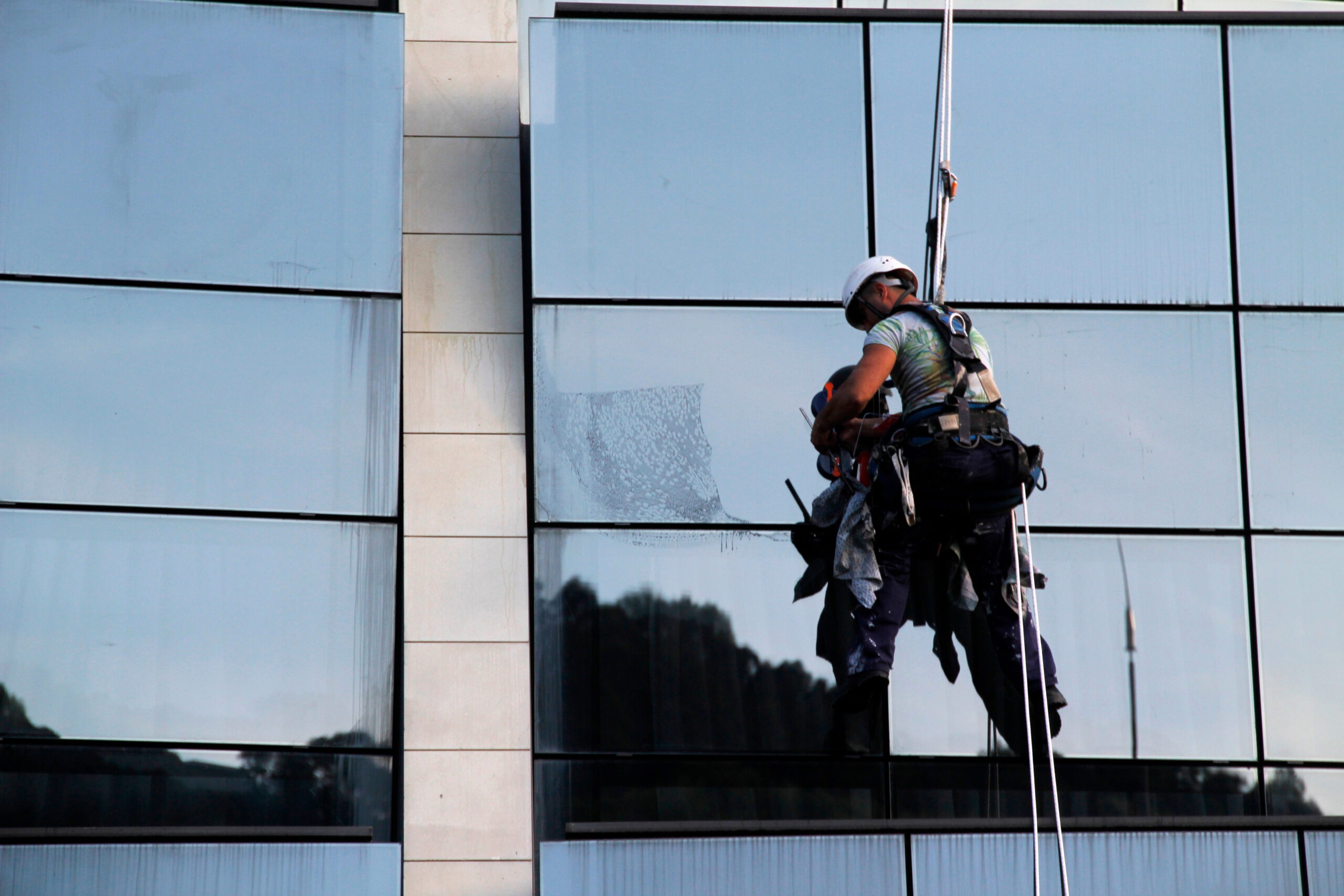Darren Bagnall from Block in a Box, looks at the Working at Heights Regulations and how they affect major works.
Anyone managing a block of flats must be aware of the Work at Height Regulations of 2005, and their obligations re adhering to the regulations and ensuring the proper inspections are carried out. Here we’ll be summarising what the regulations entail, and under which circumstances they should be applied and why safety should be such a priority when working at even low heights.
Understanding the Risks
According to the Health and Safety Executive, falls from height are one of the biggest causes of workplace fatalities and major injuries. Figures from 2022-2023 put injuries sustained from working at height-related falls at around 35,000 (up from 25,000 in the previous period). Many of these were from falls of 2 meters or less, suggesting that less care is taken when the perceived risk is low.
These injuries can be sustained by management staff, visitors to the building, leaseholders or contractors. They can range from bruises to fractures to death- all of which would need to be reported to the Health & Safety Executive under the Reporting of Injuries, Diseases and Dangerous Occurrences Regulations (RIDDOR). Near-misses should also be reported.
Besides the obvious risk of allowing people to come to harm, if no risk assessment for working at heights can be produced following a fall, legal issues can follow as well as difficulties with potential insurance pay outs.
What Are the Regulations?
The Health and Safety Executive define work at height as “work in any place where, if there were no precautions in place, a person could fall a distance liable to cause personal injury”. This could include anything from using step ladders to dust the corner of ceilings, to window cleaners working 20 storeys high.
You can view the HSE’s working at heights guide here, but the regulations state that, if work can be carried out in any way other than by someone working at height, then this option should be used. If it can’t be avoided, then the regulations must be observed to minimise the risk of accidents and injuries.
The responsible person must ensure that:
- All work at height is properly planned and organised.
- Those involved in work at height are deemed competent.
- The risks from work at height have been assessed.
- Appropriate work equipment is selected and used.
- Equipment for work at height is properly maintained and inspected.
- The risks from fragile surfaces are properly controlled.
“Take a sensible, pragmatic approach when considering precautions for work at height. Factors to weigh up include the height of the task; the duration and frequency; and the condition of the surface being worked on. There will also be certain low-risk situations where common sense tells you no particular precautions are necessary.” Health & Safety Executive
What Should be Included in the Assessment
When carrying out your assessment ahead of anyone working at heights under your management, you must legally:
- Consider the weather and how this may compromise safety.
- Ensure the basic safety of the area in which the work is to be undertaken (e.g. if working on a roof, can it safely bear weight).
- Ensure that no materials or objects will fall onto the worker and, if this can’t be ensured, set out suitable and effective measures to ensure that no one will be injured from falling objects (e.g. using exclusion zones or mesh scaffold).
- Store all materials safely so they can’t hurt anyone if they are disturbed.
- Plan for emergencies and rescues (e.g. set out an evacuation procedure, ensuring that everyone is aware)
Deciding if Someone is ‘Competent’
This can be tricky for property managers as there is no hard and fast rule for showing that you’ve selected a competent person for the job. Under the regulations, you are expected to “make sure that people with sufficient skills, knowledge and experience are employed to perform the task, or, if they are being trained, that they work under the supervision of somebody competent to do it”.
If works can be completed in under 30 mins and only involve the use of a ladder, the H&SE advises that your requirements would be met simply by ensuring the person taking on the task is shown how to use a ladder appropriately, including how to tie it. If the task is lengthier and/or more complicated, for example if scaffolding is involved, then “existing training and certification schemes drawn up by trade associations and industry is one way to help demonstrate competence”.
Ensuring the Condition of Equipment
According to the regulations, “work equipment needs to be assembled or installed according to the manufacturer’s instructions and in keeping with industry guidelines. Where the safety of the work equipment depends on how it has been installed or assembled, an employer should ensure it is not used until it has been inspected in that position by a competent person. Any equipment exposed to conditions that may cause it to deteriorate, and result in a dangerous situation, should be inspected at suitable intervals appropriate to the environment and use.”
The advice mean that you must carry out an inspection every time something happens that may affect the safety or stability of the equipment, for example: adverse weather or accidental damage.
Any working platform used for construction work and from which a person could fall more than 2 metres must be inspected:
- After assembly in any position
- After any event liable to have affected its stability
- At intervals not exceeding seven days
Where it is a mobile platform, a new inspection and report is not required every time it is moved to a new location on the same site.
You must also ensure that before you use any equipment which has been supplied by another business or rental company, “it is accompanied by an indication (clear to everyone involved) when the last thorough examination has been carried out.”
Keeping an exacting paper trail of all inspections is key for your compliance, the safety of all involved and for the sake of avoiding difficult questions should someone suffer an injury.
At Block in a Box, we provide information on how to protect your block of flats. We also help with utilities, repairs, insurance, health and safety and any issues a flat owner or manager might face. For a quote on any of our services, or to learn more about leasehold management companies or freehold companies, please contact our friendly and professional team today on 0333 0154 145.







Leave A Comment